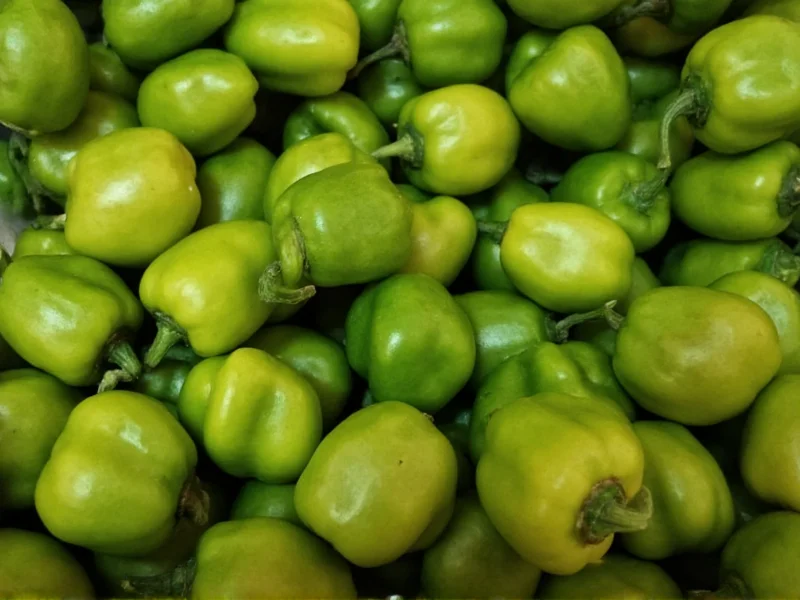When exploring the hatch chile scoville scale range, it's essential to understand that these celebrated peppers from New Mexico's Hatch Valley don't fit neatly into a single heat category. The Scoville scale measures capsaicin concentration—the compound responsible for chili heat—in Scoville Heat Units (SHU). Hatch chiles demonstrate remarkable variability, with their heat intensity spanning from mild to moderately hot depending on multiple factors.
Understanding Hatch Chile Heat Variability
Hatch chiles aren't a single cultivar but rather a regional designation for chiles grown in the Hatch Valley of New Mexico. This geographical distinction contributes significantly to their unique flavor profile and heat characteristics. The valley's specific soil composition, altitude, and climate create ideal growing conditions that influence both flavor and spiciness.
Several factors affect where a particular Hatch chile falls on the hatch green chile scoville units spectrum:
- Harvest timing: Early-season 'mild' Hatch chiles (July-August) typically measure 1,000–2,500 SHU, while late-season 'hot' varieties (September-October) can reach 5,000–8,000 SHU
- Specific cultivar: Big Jim, Sandia, and Española varieties each have distinct heat profiles
- Growing conditions: Water stress and soil nutrients directly impact capsaicin production
- Part of the pepper: Seeds and inner membranes contain the highest capsaicin concentration
Comparing Hatch Chiles to Other Popular Peppers
To better understand where hatch chile heat level compared to jalapeno varieties, consider this comparative analysis of common chili peppers:
| Pepper Variety | Scoville Heat Units (SHU) | Heat Level | Comparison to Hatch Chile |
|---|---|---|---|
| Hatch Chile (mild) | 1,000–2,500 | Mild to Medium | Baseline |
| Hatch Chile (hot) | 5,000–8,000 | Medium | Baseline |
| Poblano | 1,000–2,000 | Mild | Slightly milder than mild Hatch |
| Jalapeño | 2,500–8,000 | Medium | Similar to hot Hatch varieties |
| Serrano | 10,000–23,000 | Medium-Hot | Significantly hotter than most Hatch |
| Cayenne | 30,000–50,000 | Hot | 4-5 times hotter than hot Hatch |
Practical Implications of Hatch Chile Heat Levels
Understanding the hatch chile scoville scale range has direct culinary applications. Chefs and home cooks can strategically select Hatch chiles based on desired heat intensity:
Mild Hatch chiles (1,000–2,500 SHU) work well in dishes where pepper flavor should shine without overwhelming heat—perfect for family-friendly recipes, stuffed chiles, and sauces where children might eat. These early-season varieties often have a brighter, grassier flavor profile.
Medium Hatch chiles (2,500–5,000 SHU) provide balanced heat that complements rather than dominates dishes. They're ideal for green chile stew, cheeseburgers, and egg dishes where you want noticeable but not aggressive heat.
Hot Hatch chiles (5,000–8,000 SHU) deliver significant kick while maintaining the distinctive Hatch flavor. These late-season varieties excel in dishes where heat is a featured element—spicy salsas, carne adovada, and dishes that benefit from pronounced chili presence.
Factors Influencing Heat Perception
When evaluating are hatch chiles hotter than poblano varieties, consider that heat perception involves more than just Scoville measurements. Several factors affect how we experience chili heat:
- Preparation method: Roasting Hatch chiles reduces perceived heat while enhancing flavor complexity
- Food pairing: Dairy products counteract capsaicin, while acidic ingredients can intensify heat sensation
- Individual tolerance: Genetic differences affect how people perceive chili heat
- Flavor balance: Hatch chiles' earthy, slightly sweet notes can mask some heat perception
Interestingly, many people find Hatch chiles more approachable than jalapeños of similar Scoville ratings because of their complex flavor profile that balances the heat. This makes them particularly valuable in Southwestern cuisine where flavor depth matters as much as heat level.
Regional Significance and Authenticity
The term “Hatch chile” has protected status under New Mexico's Agricultural Improvement Act. True Hatch chiles must be grown in the Hatch Valley region, which spans approximately 30 miles along the Rio Grande. This geographical indication ensures specific growing conditions that contribute to their distinctive characteristics, including their unique heat profile.
During peak season (July–October), local roasters fill Southwestern towns with the smoky aroma of roasting Hatch chiles. This tradition not only enhances flavor but also helps loosen the skin for easier peeling—a process that can slightly reduce perceived heat by removing some capsaicin-rich outer layers.
Using Hatch Chiles Based on Heat Preference
When working with mild hatch chile vs hot hatch chile varieties, consider these practical tips:
- For mild applications: Remove seeds and inner membranes completely, and consider blanching briefly before use
- For medium heat: Retain some membranes but remove most seeds
- For maximum heat: Include seeds and membranes, and chop finely to distribute capsaicin evenly
- Heat adjustment: Add dairy (sour cream, cheese) or acid (lime juice) to counteract excessive heat
Remember that cooking time affects heat perception—longer cooking can distribute capsaicin more evenly but won't reduce the total heat content. For the most authentic experience, seek out fresh, in-season Hatch chiles rather than canned alternatives, which often have inconsistent heat levels.











 浙公网安备
33010002000092号
浙公网安备
33010002000092号 浙B2-20120091-4
浙B2-20120091-4